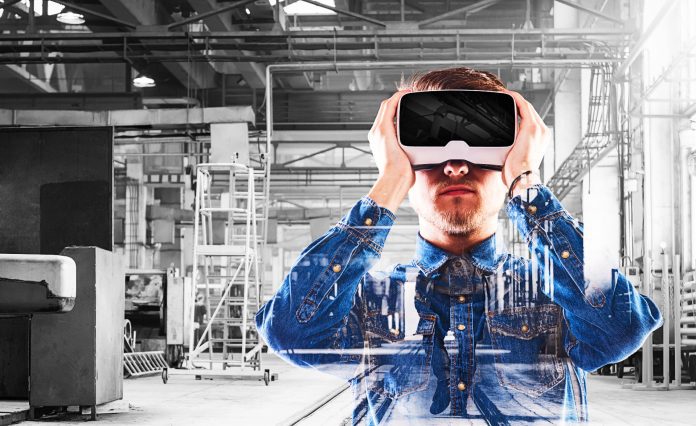Humans are the key piece of successfully implementing digital change in augmented manufacturing
Speaking during a World Economic Forum panel discussion today, industrial leaders drove home the point that the North Star for manufacturing isn’t full-on automation in a lights-out plant. Rather, the goal is to leverage human training and know-how to maximize investments in digital solutions resulting in an augmented manufacturing process that improves productivity and business outcomes.
Opening up the panel, moderator Nicholas Carlson, global editor-in-chief at Insider, laid out the thesis: “The robots are your friends, not the enemy…This is a partnership and [the] workers are a big part of it and they need to actually be relied on and empowered through automation.” But, he acknowledged, this vision doesn’t align with the perception that augmented manufacturing investments are all about removing workers in pursuit of a machine-driven process.
There was consensus among panelists that bringing technology to bear on the manufacturing sector won’t happen at scale and in an accretive manner if actual shop floor employees are sidelined as decisions are made and solutions implemented.
As International Trade Union Confederation General Secretary Sharon Burrow put it: “Fully-automated workplaces, frankly, are still the stuff of science fiction and should probably remain there…If you’ve invested in people and they know what the business is—they understand quality, they understand what you’re producing—then augmentation can assist…But if it’s not in-sync with the workers themselves, if you’re not blending the knowledge and use of the technology, then, frankly, you will be poorer for it as a business.”
“We have to work out how to involve the workers on thes hop floor to help you actually both introduce the technology at optimum performance but also monitor its capacity to work,” she said. The “worker’s voice is critical.”
So how do you do that? Workaround GmbH is taking on the challenge/opportunity with its wearable devices, software and integration products. The firm essentially sells lightweight barcode scanners for use in the automotive, logistics, manufacturing and retail sectors; workers use the tools to speed up processes, reduce handling errors, and produce actionable data sets for process improvements.
Workaround’s CEO Andreas Koenig, who was wearing a device on the stage in Davos, said, “The human is probably one of the most underrated factors on the shop floor in logistics.” He likened the goal to developing a digital twin of a human. Connecting workers with their surroundings and enabling bi-directional interactions with machines and data allows for guided, smarter workflows in real time. “We believe in the human as a central and very important factor in every industry.”
In this cycle of humans driving technological change in smart machines that then has to be put to use by other humans, the digital tools are only one piece of the puzzle. Schneider Electric EVP and CEO of Industrial Automation Barbara Frei, asked what mistakes she sees happening in this area, said there’s a recurring “problem of executive transformation. The human aspect of change leadership is completely underestimated…That’s a big failure point.” She called for parallel change processes around technology and leadership.
Frei said Schneider Electric has developed an internal culture meant to involve people in the digital transformation process with a focus on demonstrating to workers how digitalization is improving their performance. “You can see one-to-one, what is the performance of my production line? I think it was quite powerful because our employees feel completely involved, they can have a say, and they can see the success.”
To the criticisms of automation as the key vector for job loss in manufacturing, Frei pointed out that automation of manual tasks lets workers look at “new business opportunities instead of the old ones.” With automation, “Then you are free to do other things. I think this other thing is the motivating part.”
Burrow noted the “fear factor” involved and said, “Right now we need to be open and transparent about what the change is, what it’s for. Sometimes the tools are sexy but actually don’t help that much. What I do know is…if people are part of the solution, then you will get there faster and with much better feeling in the workforce…A lot of the lack of interest in many of these jobs comes from the fact that there is no sharing of what the actual work is. It’s the old school show-and-tell piece. People have to know what the job is to actually understand, yeah, they’d like to try that.”
Watch the complete panel discussion here.

